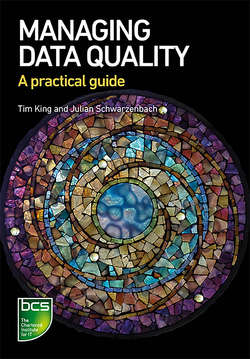Читать книгу Managing Data Quality - Tim King - Страница 22
ОглавлениеManaging Data Quality
6
Also, don’t forget that at some point in the future the ‘new’ software tool will be replaced by another tool. Where will the data come from for this even newer software? Well, it will be the data that you currently have (which in turn has been migrated from several different previous systems). This means that out of the four components of the business activity, the one that lasts the longest and will have a massive effect on outputs is the data.
Data are an asset
Data are being created at a faster rate than ever before (however conservatively you forecast future data growth) and data are now more important than they have ever been. As the world becomes a more data-driven place, smart businesses can gain competitive advantages by exploiting data more effectively. This vast data explosion brings newer, different challenges to businesses; it is one thing to store lots of data, but the benefits will only come if the data are of suitable quality and reach the right people at the right time in order to deliver better organisational outcomes. A mindset of treating data as an asset will help your organisation to achieve this.
An asset is a resource with value that can deliver benefit to an organisation. Data, therefore, warrant being treated in the same way as a physical asset. Like physical assets, data:
can have high value for your organisation;
can be assessed for quality;
can drive up business performance and safety by enabling better informed decisions;
have legal or regulatory requirements to be managed effectively;
have a life cycle – from conception, to capture, to operation and renewal;
can increase business costs if not managed effectively (and therefore reduce efficiency and profitability).
Many larger organisations, such as those in the utilities and transport sectors, are developing management systems that provide more effective and sustainable management of their assets and activities. Managing data requires a similar mindset.
We have come across instances where an organisation has been using a spreadsheet-based performance dashboard. Concerns about the quality and integrity of the outputs from this triggered these organisations to spend significant money implementing a ‘best of breed’ analysis and dashboard tool to deliver performance dashboards. However, the data sources were not changed and thus, although the outputs looked far more impressive, the data quality was the same, leading to a false perception of the reliability of the performance indicators shown by the dashboard.
